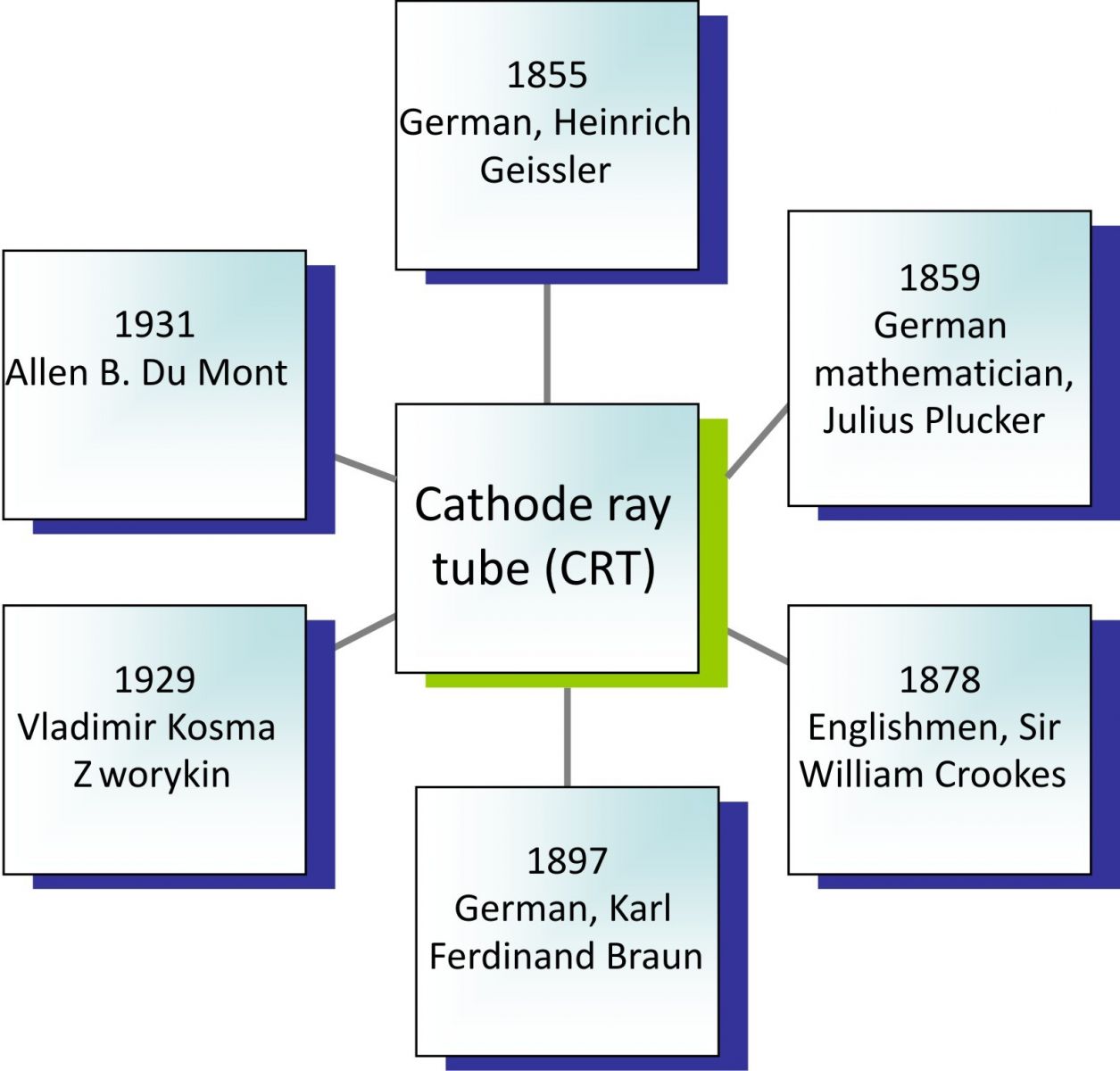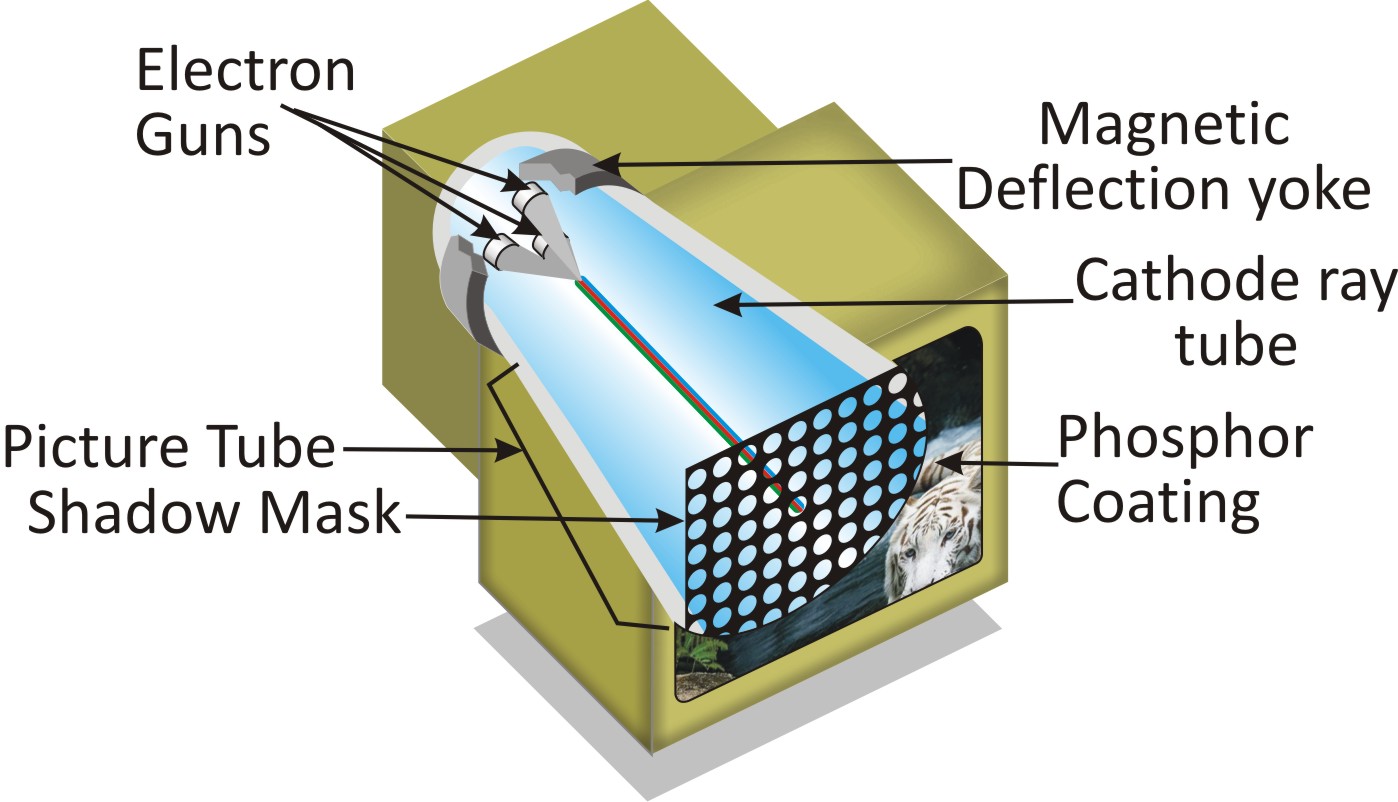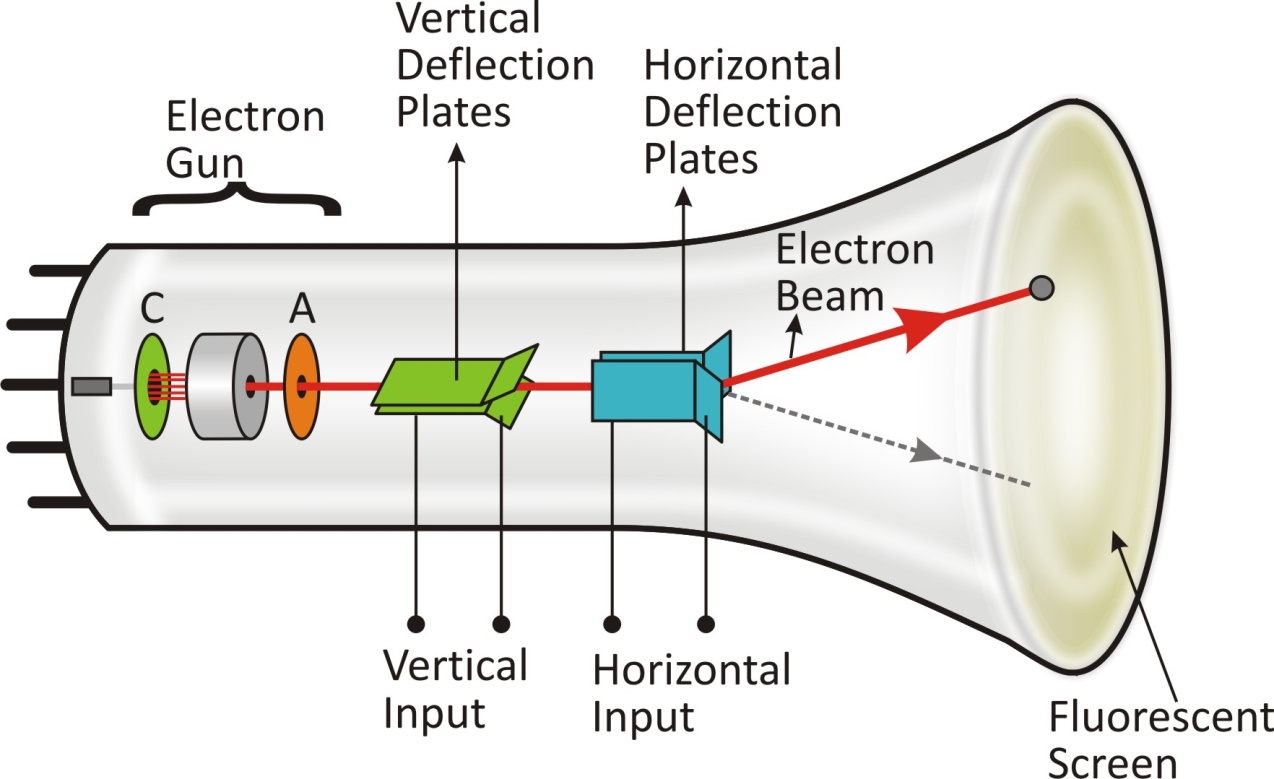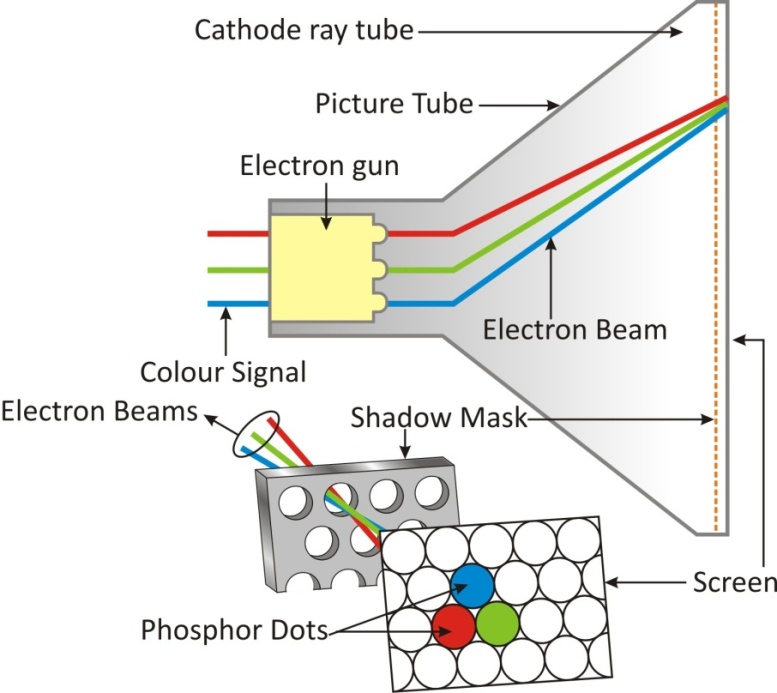History of CRT |
|
The development of electronic television systems was based on the development of the cathode ray tube (CRT).
|
|
A cathode ray tube or picture tube was found in all electronic television sets until the invention of the LCD or LED screens.
|
|
The first cathode ray tube scanning device was invented by the German scientist Karl Ferdin and Braun in 1897.
|
|
Braun introduced a CRT with a fluorescent screen, known as the cathode ray oscilloscope.
|
|
The screen would emit a visible light when struck by a beam of electrons.
|
Timeline |
 |
What is CRT? |
|
The cathode-ray tube (CRT) is the oldest version of the television.
|
|
It is a specialized vacuum tube in which images are produced when an electron beam strikes a phosphorescent surface.
|
|
Most desktop computer displays make use of CRTs.
|
|
The CRT in a computer display is similar to the "picture tube" in a television receiver.
|
 |
Working of CRT |
|
A glass cathode-ray tube which contains a vacuum has three electron guns at its narrow end, each containing an anode and cathode assembly.
|
|
The cathodes here emit electrons; the anodes draw the electrons away from the cathodes, focusing and accelerating them into electron beams.
|
|
The deflection yoke, around the tube base, manipulates the three beams via electromagnetic force, working with the CRT's circuit to sweep them across the screen in precise, horizontal lines, where a beam hits the screen, it causes a red, green, or blue (RGB) phosphor dot to glow; the screen's inner surface is coated with these coloured phosphors.
|
 |
|
In shadow-mask models, the RGB phosphors on the inside of the screen are arranged as a staggered pattern of dots.
|
|
In a shadow-mask CRT, when the monitor receives commands from television’s graphics adapter, the electron guns fire their three beams, in concert, through tiny holes in the shadow mask, a metal screen just behind the phosphor-coated display glass.
|
|
Their channeled beams illuminate a trio of phosphor dots (a triad) lining the inside of the glass.
|
 |
|
A pixel-the smallest image element we can see-comprises one or more triads; how many depends on the resolution we specify.
|
|
The lower the resolution, the more triads that are assigned to each pixel.
|
|
The electron guns blaze across the screen, row by row, illuminating phosphors in their wake. Varying the beams' intensity strengthens or weakens the glow from a given phosphor dot; by careful manipulation of every one, the triads and pixels, seen by the eye as single units, create the illusion of different-colour dots.
|
|
Phosphors don't glow for long, though. Once the guns have scanned the whole screen, they repeat the process-typically, 60 to 80 times a second. (This number is what is known as the refresh rate.)
|